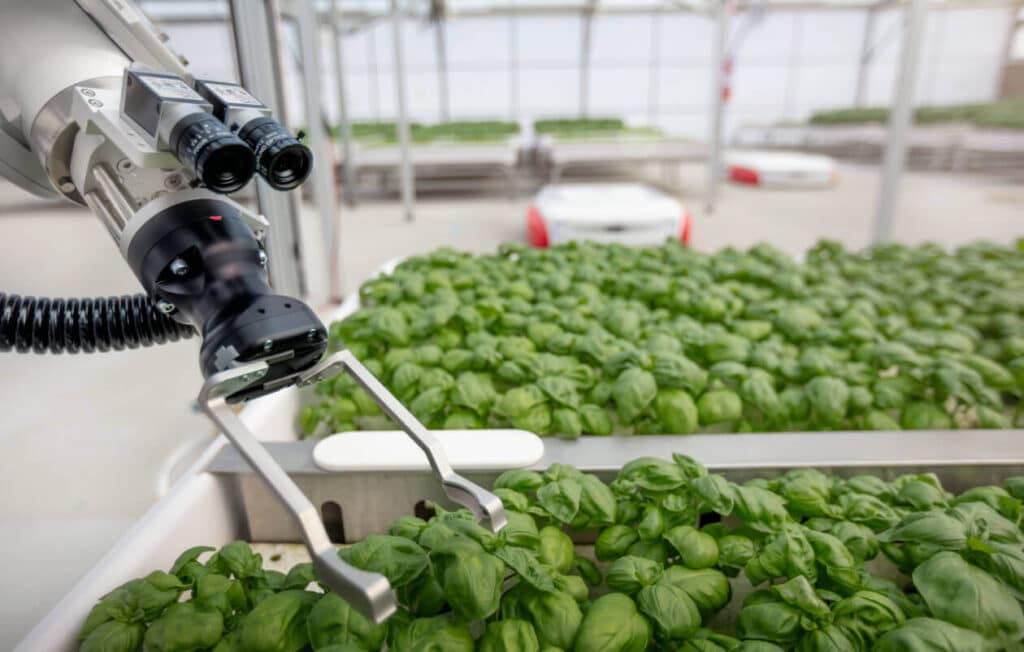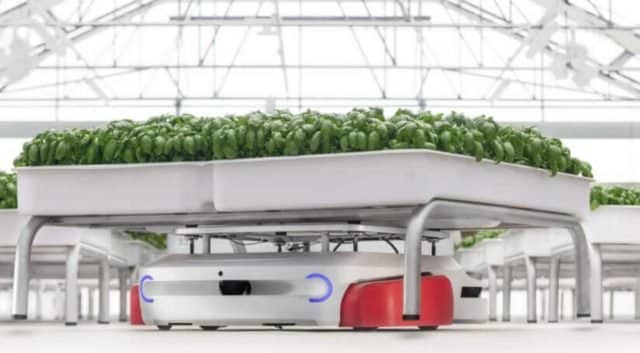Remember Iron Ox? I told you about it some time ago. It is the Californian startup that tries to fight water waste, greenhouse gas emissions and food waste by automating crops.
To do this, Iron Ox leverages two self-developed, AI-supported robots to perform most repetitive farming tasks and ensure resources are used efficiently. Two robots which are respectively the arm and the mind.
Grover, “the arm,” can lift more than 450 kilos (1.000 pounds), and helps move plant “modules” (i.e., planters) through the greenhouse. Work in tandem with Phil, “the mind” for irrigating and harvesting crops. To maximize crop yield and quality, Phil supplies water and nutrients, monitoring crop status and pH levels for each module, and ensuring resources are not wasted.
Indoor crops of the new millennium

Grover and Phil are designed to work in greenhouses, which implies that Iron ox must raze a structure before growing leafy greens, fruits and other produce in a given region. And that's what he's doing. After an initial facility in the San Francisco Bay Area, the company has just completed construction of a 5000-square-meter (53.000-square-foot) greenhouse in Lockhart, Texas, where it will bring sustainable crops to the entire state.
“The facility in Lockhart is a paradigm for bringing sustainable agriculture projects close to urban centers around the world,” he says Jen Capasso, Iron Ox Senior Communications Officer.
We want to make food a renewable resource for everyone. Every crop grown in an Iron Ox facility will remain nearby, ensuring our surrounding communities have access to fresh, locally and sustainably grown produce.
Jen Capasso
What about human work?
Robots create concerns about labor relocation in all fields now, but when it comes to agriculture they are particularly strong. Traditional crops have long provided work, even if at low income and often exploiting (in some cases to the point of death) seasonal workers or immigrants. Not ideal jobs, but there are those who live there.
On the topic, Iron Ox cuts it short. He claims that theprecision farming Let it be an opportunity to renew everything. The crisis in agricultural work arises from the fact that more and more people want to move away from exhausting work that is often harmful to health and the environment: technology is a positive alternative, which frees up human resources to do healthier and more rewarding work.
“We have been waiting for a technological update for a long time,” says Capasso. “By introducing technology into agriculture, we can not only increase efficiency, become more sustainable, but we can also provide workers with technological skills that are highly beneficial in a digital world.” Will Iron Ox support this work “transition” with training programs? Let's wait and see.
Certainly the advent of harvesting robot need automated greenhouses will drastically reduce manpower: the direction is that of a world in which the concept of work human must be reinvented, possibly freed from discomfort, possibly freed from "duty".


